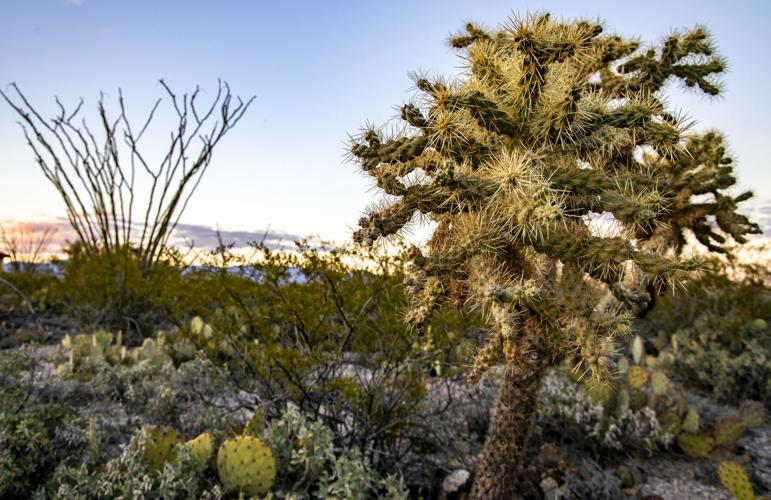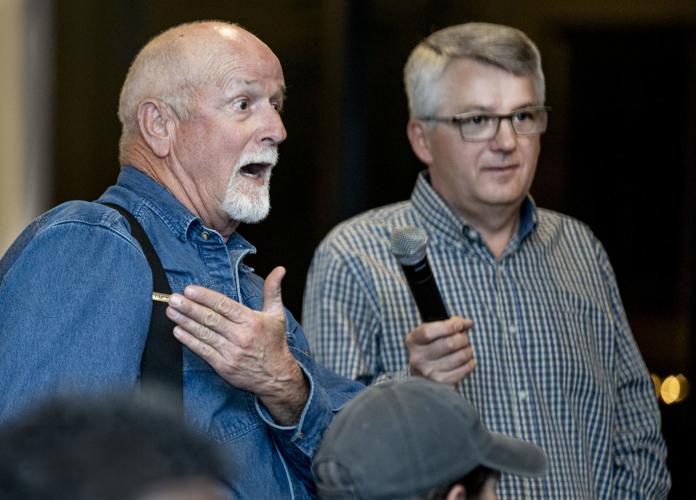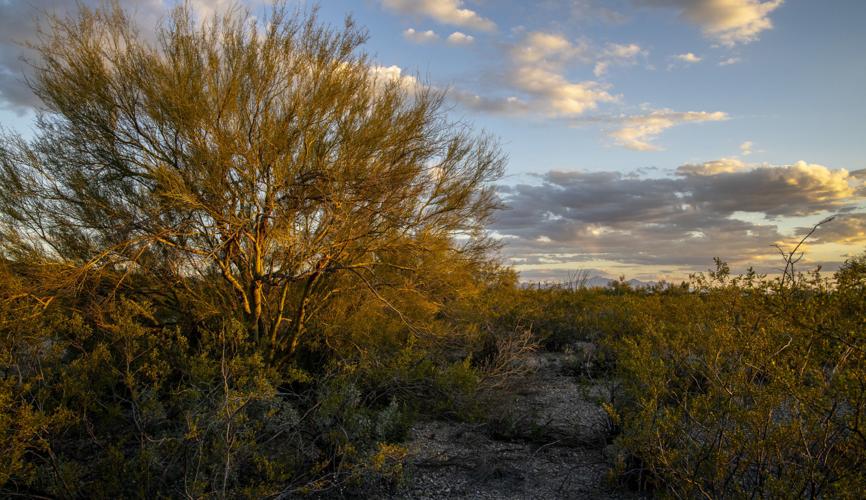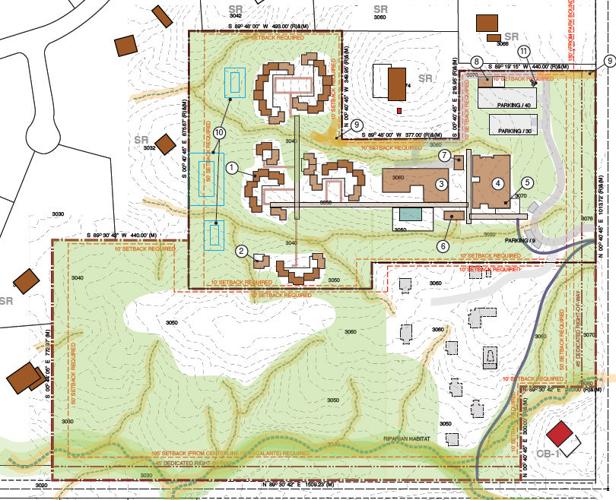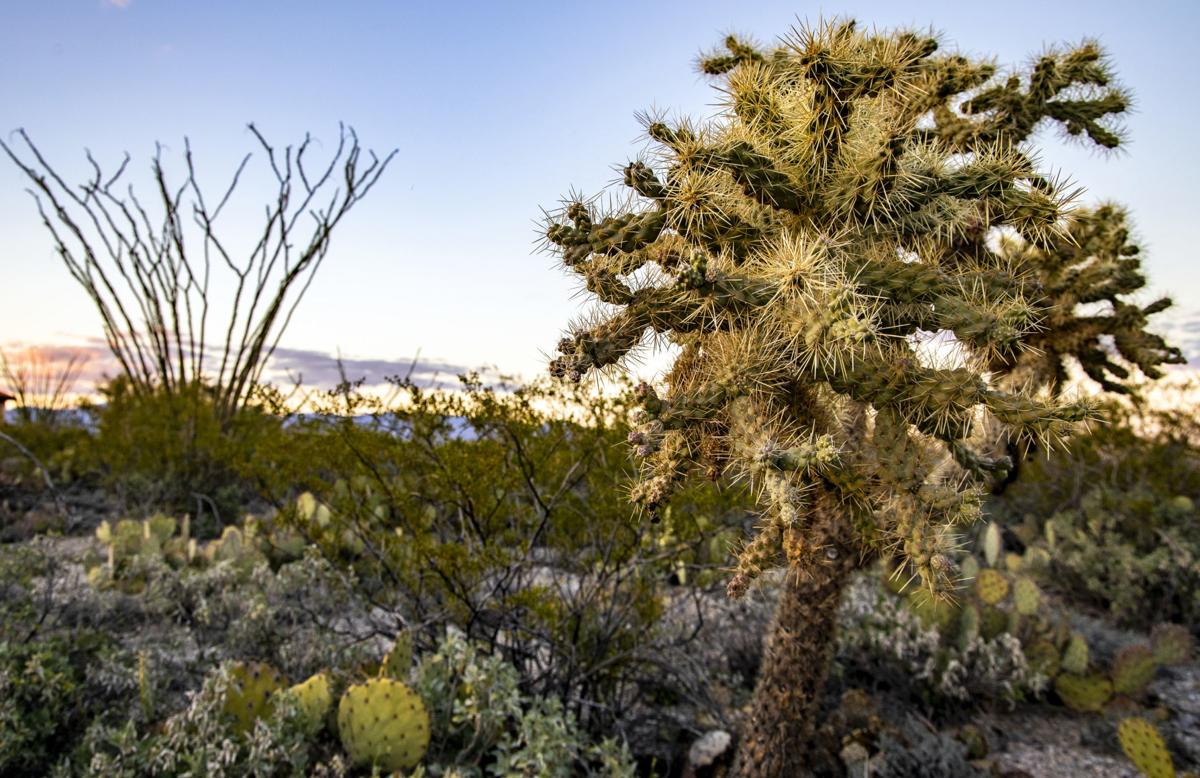A fight is escalating over plans to build a bicycle-centric resort on a mostly undeveloped, 20-acre parcel across the street from Saguaro National Park East’s entrance on Old Spanish Trail.
On one side are a local husband-and-wife development team who have been trying to develop the property for the last five years.
The project has the blessing of Saguaro National Park’s superintendent, a recommendation for approval by county development staff, and does not have to undergo a lengthy rezoning process because the planned 49 “casitas” comply with existing zoning standards.
However, a well-organized group of east-side residents has formed the “Save Saguaro National Park” effort, deeply opposed to the proposed resort. Their last public event drew roughly 100 people.
Their argument, in part, is that high-density commercial development near the entrance to the national park violates the intent of the low-density suburban ranch zoning there.

Map of the proposed Bike Ranch across from the entrance to Saguaro National Park East. The current proposal to build 49 small cottages, a 34-foot high “Bike Barn,” a 79-space parking lot, a restaurant, cafe, and a lighted outdoor public gathering area is about 2 years old.
Proposal has evolved, developer says
The current proposal to build 49 small cottages, a 34-foot high “Bike Barn,” a 79-space parking lot, a restaurant, cafe, and a lighted outdoor public gathering area is about 2 years old.
But the controversy over development of the land dates back to 2014.
After months of public discussions about the bike ranch, local developers Kelley Matthews and her husband, Peter Lasher, decided to withdraw their application for a conditional use permit in late 2014 just before it was scheduled for a Pima County Board of Supervisors vote.
County development staff had recommended in 2014 that the supervisors reject the permit, in part because of the public opposition to the project, which would be located in the one-mile buffer zone around Saguaro National Park.
Matthews says the proposal has since evolved, and that the time is right to build an environmentally friendly resort catering to the international cycling community that already sees Tucson as a popular destination.
“Our idea was to create a 21st-century guest ranch,” Matthews said. “The idea was to still come here and appreciate Tucson and enjoy our immense natural beauty,” she said. “Instead of having horses, they would have bicycles.”
Her husband, she said, has dreamed of building a bike-themed resort for the last 30 years.

Dr. David Robinson, left, airs his feelings about the development. With him is development opponent Jeff Bruce, who opposes the plan, in part because it is so close to the park.
Neighbors skeptical of promises
Jeff Bruce, one of the organizers behind the Save Saguaro National Park group, says trust is in short supply when it comes to the resurrected plans for the bike resort.
There is a site plan, and the developers have made some small changes, but the proposed density is similar as before for the 20-acre site.
And the plans rely on what opponents see as a loophole in density requirements.
At the heart of the dispute is suburban ranch zoning, a low-density rural designation that is principally for single-family residences and associated conditional uses on 3.3-acre lots. It allows one home for every 3.3 acres.
While the proposal doesn’t need a rezoning, the developers have again asked the county to approve a conditional use permit, which gives the property owner some leeway on how to build on the site.
Too much leeway, Bruce says, noting the existing zoning for the 20-acre parcel would typically allow for six homes to be built on the property.
“It isn’t right. To us, (SR zoning) meant 3.3 acres or above for a single-family home,” he said. “I think it is a loophole.”
In a county staff report released last week, a planning staffer said the bike resort meets the spirit of SR zoning, and that one permitted use under the zoning is intended “to meet the lodging, convention and recreational needs of short-term visitors.”
“The bike ranch is an allowed use, 49 rooms or less,” Matthews said.
After working with area residents for the last year, Matthews contends groups like Save Saguaro National Park are relying on emotional arguments.
“Their arguments are not fact-based,” she said.
The developers say not everyone in the area is opposed to the development, but they are nervous to come forward.
“They have to live in those neighborhoods,” Matthews said.
But Bruce says the designation of a buffer zone around the park is meaningless if a dense development can be built that close to the entrance of the park.
“It is one of our major complaints,” he said.
He also says the area is not suited to be a destination for cyclists, claiming that Old Spanish Trail is too narrow and too busy to accommodate large packs of cyclists.
“As a cyclist, it is a beautiful place, and I enjoy it,” he said. But it is not a safe place, he added, saying there are all-too-frequent accidents involving cyclists in the area — and most don’t make the news.
Nearby neighbors are also anxious about plans to build a large on-site sewage-disposal system, concerned whether the developers will spend enough to mitigate odors.
“They don’t trust them on doing the right thing,” Bruce said.
After months of interactions with the developers, Bruce is skeptical that the couple doesn’t have long-term plans to expand the bike park — noting the pair own an adjacent 26-acre parcel.
Matthews says they has no immediate plans to develop the second parcel, but Bruce and his group think the developers will expand the park if the Board of Supervisors signs off on the development.
For Save Saguaro National Park supporters, the bottom line is their contention the proposal to build a bike ranch simply won’t work as proposed in the buffer zone.
“There is only one Saguaro National Park. It cannot be moved,” organizers argue in printed materials. “The bike resort can be built anywhere.”

A flower in the desert across the street from the entrance to Saguaro Park East on March 18, 2019 in Tucson, AZ. Developers have proposed an extensive bike resort to be built adjacent to Saguaro Park East, less than one-third of a mile from federally designated wilderness lands.

“The idea was to still come here and appreciate Tucson and enjoy our immense natural beauty,” says Kelly Matthews, who would develop the land with her husband, Peter Lashar.


